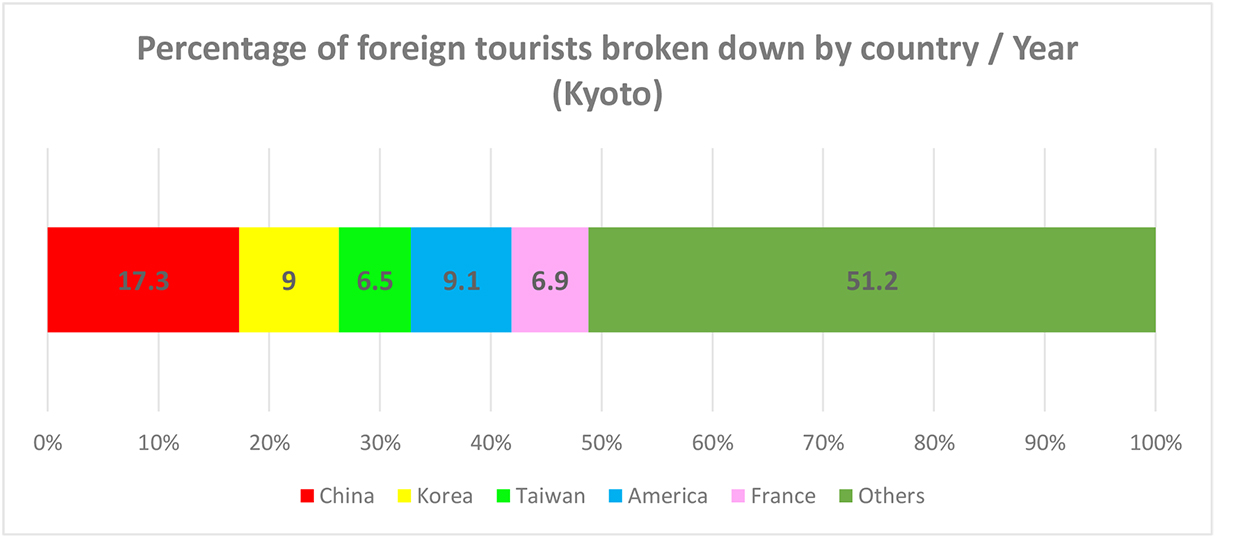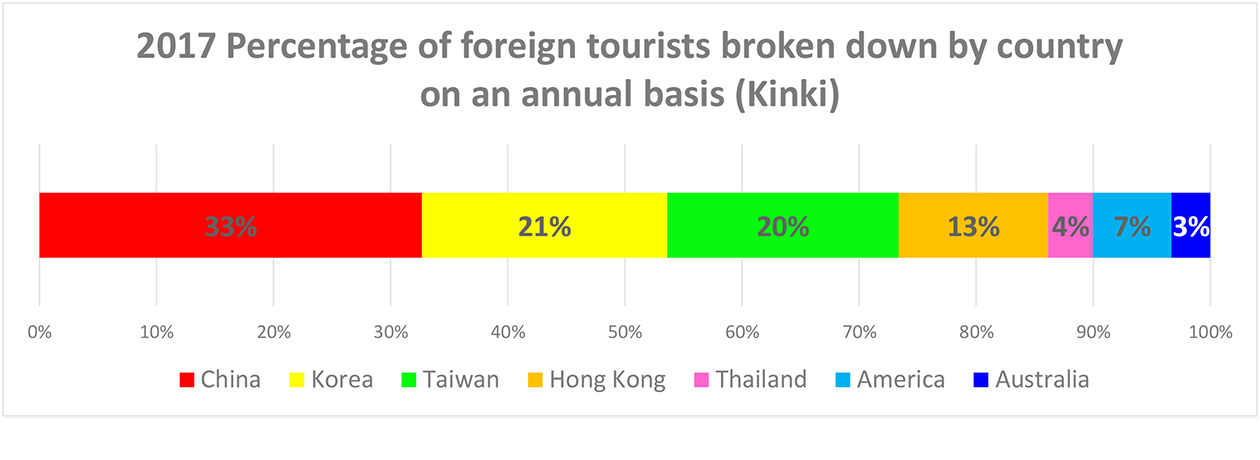Kansai Region
Kansai Region, the core of Western Japan, is the second largest city area followed by Kanto Region. Prefectures such as Kyoto, Nara and Osaka have traditional architectures such as Todaiji Temple, where the largest Great Budda statue is stored, Kiyomizu-dera Temple and Osaka castle. Many “Inbound” tourists visit Kansai Region visit Kansai area wishing to see these cultural-heritages. The reason why many tourists visit these areas is its places where charm of Japan ancient times can be felt. Because it is an attractive place where even foreign travelers can deeply feel the japanese traditional atmosphere.For example, the fortunetelling slip at the temples. When we drew those slips in Kyoto, they were written in various languages. The service can also be experienced in the famous Kimono rental shops in Kyoto. Kimono lessons to the “Inbound” tourists teaching how to wear Kimono that they purchased have started in multiple languages.
Attracting tourists by supporting multilingualism in every aspect.However, there are also another issues. Too many visitors from abroad brings not only traffic cloudiness but also annoying matters for residents. Besides, even if we would like to rebuild new houses in the historical district of Kyoto city, it would be difficult to preserve the unique Kyoto landscape and maintain the old houses.The people living there and the travelers continue to seek ways to smile together.

We asked the people in Kyoto the following questions!
Tourist information center in Kyoto
Q: How many “Inbound” tourists do you have per year?
A: Approximately 800,000 in whole Kyoto.

A.There are a lot of travelers from China.

A: The information centers in Kyoto city are always prepared to communicate in English, Chinese and Korean, which are opened from 8:30 to 19:00 throughout the year. Recently, the guides speaking other languages such as French, Spanish and German are being increased.

We asked the people in Nara the following questions!
Toudaiji Templ
Q:How many “Inbound” tourists do you have a day?
A: Approximately 1,000 a day, 365,000 a year. Half of the total visitors are from overseas.
Q: Which country are they from?
A: Half of them are from China and Korea. Followed by westerners. However, the number of Korean is declining.
Q: What efforts do you make for accepting “Inbound” tourists?
A: We use multi-lingual voice guidance and display guide plates in other languages.


